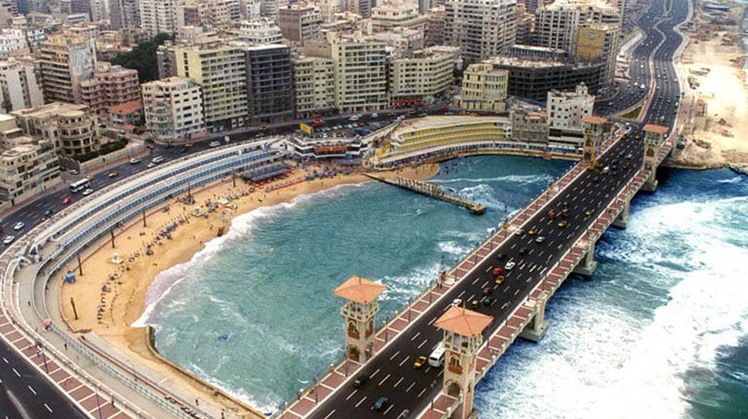Alexander the Great founded the city that bears his name on the Mediterranean coast on April 7, 331 BC, on the ruins of an ancient Egyptian city called Ra-Qadt or Rakouda. After Alexander's death in Babylon in 323 BC, his army leaders struggled among themselves for control of parts of his great empire.
Egypt was the share of the leader Ptolemy I Soter "305-285 BC," who established a state bearing his name known as the Ptolemaic State "332-30 BC." And Alexandria became the capital of the Ptolemaic rule and became the most important and largest city in the eastern Mediterranean until the rise of Constantinople In the fifth century AD.
One of the most important archaeological monuments that can be seen in Alexandria today is the huge Diocletian’s Column or the Pillar Column “late 290 AD”, which is mistakenly known as Pompey’s Column, as it is located directly next to the Serapeum site, which is the main temple of the god Serapis, the national lord of ancient Egypt during this period. This temple was destroyed when the Byzantine Emperor Theodosius banned paganism in 391 AD. Unfortunately, many of Alexandria's monuments were not spared such as the Great Lighthouse of Alexandria, the Library of Alexandria, and the tomb of Alexander the Great.
Among the most surviving monuments of Alexandria, according to the website of the Ministry of Tourism and Antiquities: They are the cemeteries, and among the most important and creative are the cemetery or Catacombe comm al-Shaqafa from the Roman era near the Serapeum. The Catacombs contain Greek-style catacombs, triple burials, a shrine and a banquet area that were used During funerals, scenes and inscriptions combine ancient Egyptian and Greek artistic beliefs and traditions.
One of the most beautiful non-funeral archaeological sites remaining is the Kom El-Dikka area, whose ruins date back to the late Roman era until the Byzantine era, which includes the Roman theater, a bathroom, a lecture hall, and houses for the elite, which are distinguished by mosaic decorations, in addition to workshops.
The ancient city suffered a lot throughout its history, as it was destroyed by Queen Zenobia, queen of Palmyra in 259 AD, and it was also subjected to several major earthquakes in the late antiquity and the Middle Ages, however, the glory of Alexandria and many of its monuments remained in the memory and writings of the Greek and Roman travelers recently. Excavations of submerged antiquities began with the discovery of monuments and huge statues in the Ptolemaic port and the coastal royal residence.
 Mon, Feb. 14, 2022
Mon, Feb. 14, 2022